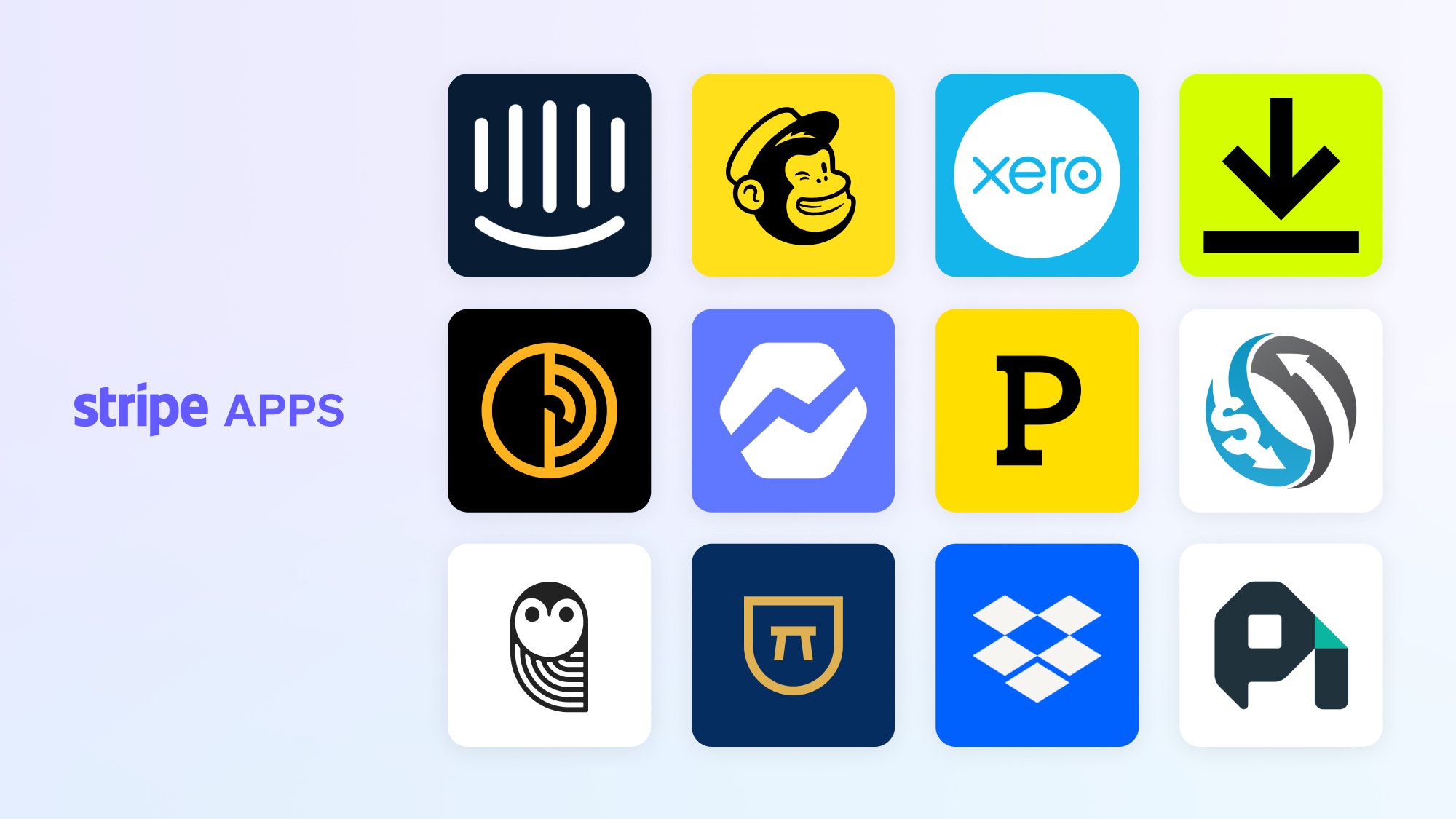Stripe launches Stripe Apps to help businesses build or discover tools that work seamlessly with Stripe

Stripe Apps brings an array of tools together, providing a one-stop shop for managing operations with Stripe and its partners.
For the first time, developers can build and publish apps that reach millions of businesses on Stripe, or build apps for use within their own company.
At launch, the Stripe App Marketplace will include more than 50 apps from leading providers like DocuSign, Dropbox, Intercom, Mailchimp, Ramp, and Xero—with more to come.
SAN FRANCISCO AND DUBLIN—Stripe, a financial infrastructure platform for businesses, today released Stripe Apps and the Stripe App Marketplace. As an ecosystem of popular third-party tools, Stripe Apps addresses a fundamental challenge for growing businesses and meets a top request from Stripe users.
To compete in the internet economy, businesses utilize a wide variety of software tools. Even if they’re using Stripe to process payments, they might use separate tools to send a refund confirmation and close out the associated customer support ticket. While these tools are helpful, they introduce the friction of manual coordination and the potential for human error as users switch between them. Stripe Apps unites many of the tools that businesses rely on, making it easier to complete common tasks in one place.
New integrations to streamline operations
Stripe Apps allows businesses to simplify operations and combine fragmented workflows. For example, using the Intercom app in the Stripe App Marketplace, a customer support agent can see a customer’s full support history and directly reply to support tickets in the customer details page of the Stripe Dashboard.
“With the Intercom app integrated into Stripe, our customers can investigate issues, answer payment queries, approve refunds, and more from the Stripe Dashboard. They can do all this while still providing real-time, in-context support to customers via the Intercom messenger,” said Des Traynor, cofounder and chief strategy officer at Intercom.
Stripe Apps makes it possible for businesses to customize Stripe for the first time. It also enables automated sharing of contextual information across apps, keeping systems of record in sync and giving users a fuller view of their business.
“Let’s say, for example, a business owner wants to automate a targeted message when a customer makes a purchase, sending them a specific discount offer to encourage repeat purchases. The Mailchimp app automatically syncs this customer’s information between Stripe and Mailchimp, streamlining their operations and saving them time,” said Jon Fasoli, chief product and design officer at Mailchimp.
Apps for every use case, for every business
The Stripe App Marketplace includes apps for an array of core business functions, like accounting, analytics, CRM, eSignature, marketing, and more. At launch, it will include more than 50 apps from leading providers like DocuSign, Dropbox, Intercom, Mailchimp, Ramp, and Xero. Stripe will add more partners and apps over time, as well as apps in non-English languages.
Developers can build and publish apps in the Stripe App Marketplace to reach the millions of businesses that use Stripe. Alternatively, they can develop custom apps for use within their company. For example, they could build an app that displays information from internal CRM and ERP systems in the Stripe Dashboard.
While apps are visible and interactive in the Stripe Dashboard, they also operate in the background. There, they draw on the full power of Stripe’s API to perform tasks like creating a customer account, updating an existing customer record, or generating an invoice.
”With Stripe Apps, businesses can customize Stripe with their SaaS tools to best serve their customers. We’re excited for this new chapter and can’t wait to see the ingenuity of all the apps that developers will build in the months and years ahead,” said Bowen Pan, head of product for Stripe Apps.
Today, developers can begin building apps and users can begin exploring the Stripe App Marketplace. Users will be able to install apps directly in the coming weeks.